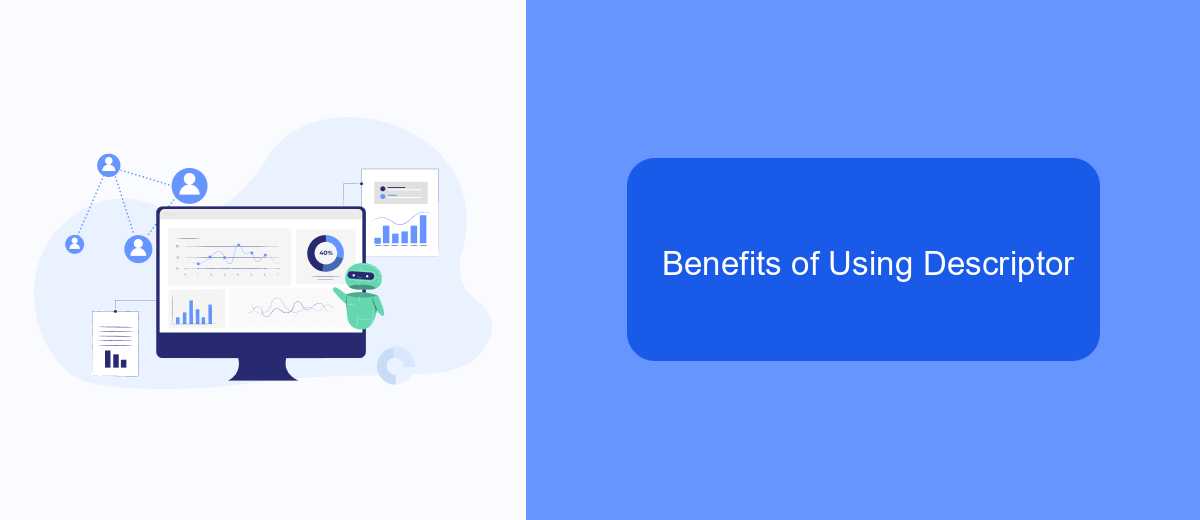In the world of Robotic Process Automation (RPA), UiPath stands out as a leading platform for automating repetitive tasks. One of its essential components is the Descriptor, a powerful tool that helps identify and interact with UI elements. This article delves into what a Descriptor in UiPath is, its importance, and how it enhances the accuracy and efficiency of automation workflows.
Introduction
UiPath is a leading platform for robotic process automation (RPA) that enables businesses to automate repetitive tasks. One of the key components in UiPath is the descriptor, a crucial element that helps in identifying and interacting with UI elements during automation processes. Understanding descriptors is essential for creating efficient and reliable automation workflows.
- Descriptors help in locating UI elements accurately.
- They ensure the robustness of automation scripts.
- Descriptors can be customized to handle dynamic UI changes.
By leveraging descriptors, UiPath users can create more resilient and adaptable automation solutions. For instance, integrating UiPath with services like SaveMyLeads can further streamline workflows by automating lead management and data integration tasks. This combination not only enhances productivity but also ensures data accuracy and consistency across different platforms.
Understanding Descriptor Attribute

In UiPath, a descriptor attribute is a crucial element used to define and identify UI elements during automation. These attributes act like a set of properties that provide detailed information about UI components, such as buttons, text fields, and menus. By leveraging descriptor attributes, UiPath can accurately locate and interact with these elements, ensuring reliable and efficient automation processes. Understanding and correctly configuring descriptor attributes is essential for developing robust RPA workflows that can handle dynamic and complex user interfaces.
Descriptor attributes can include properties like element ID, name, type, and even custom attributes defined by the developer. Tools like SaveMyLeads can be integrated to streamline the process of setting up these attributes. SaveMyLeads helps automate data transfer between different applications, ensuring that descriptor attributes are consistently updated and maintained. This integration not only enhances the accuracy of UI element identification but also reduces the manual effort involved in managing these attributes, thereby improving the overall efficiency of the automation pipeline.
Using Descriptor in UiPath

Using descriptors in UiPath allows for more precise and reliable automation by identifying UI elements based on a set of properties. This ensures that your automation scripts interact with the correct elements, even if the UI changes slightly. Descriptors are essential for creating robust and adaptable workflows.
- Open UiPath Studio and load your project.
- Navigate to the activity where you want to use a descriptor.
- Select the UI element and open the properties panel.
- Configure the descriptor by setting attributes like 'aaname', 'id', or 'class'.
- Test the activity to ensure the descriptor correctly identifies the UI element.
For complex integrations, you can use services like SaveMyLeads to streamline the process. SaveMyLeads allows you to connect various applications and automate data workflows without needing extensive coding knowledge. By integrating SaveMyLeads with UiPath, you can enhance your automation capabilities, making your processes more efficient and reliable.
Benefits of Using Descriptor

Using descriptors in UiPath offers several advantages that streamline the automation process and enhance the overall efficiency of workflows. Descriptors provide a reliable way to identify UI elements, ensuring that automation scripts interact with the correct elements even when there are changes in the UI layout.
One of the significant benefits of using descriptors is their ability to improve the accuracy and robustness of automation. By leveraging descriptors, UiPath can handle dynamic and complex UI changes more effectively, reducing the need for manual adjustments. This leads to a more resilient automation process that can adapt to various scenarios.
- Enhanced accuracy in identifying UI elements
- Increased robustness against UI changes
- Reduced manual intervention and maintenance
- Improved adaptability to different applications
In addition to these benefits, integrating UiPath with services like SaveMyLeads can further enhance automation capabilities. SaveMyLeads allows for seamless data integration and workflow automation, making it easier to manage and optimize business processes. By combining UiPath with such services, organizations can achieve higher efficiency and productivity in their operations.
Conclusion
In conclusion, understanding and effectively utilizing descriptors in UiPath can significantly enhance the automation process. Descriptors serve as essential elements that allow for precise interaction with UI elements, ensuring that automation tasks are executed accurately and efficiently. By mastering descriptors, users can create more robust and reliable automation workflows, minimizing errors and improving overall productivity.
Furthermore, integrating UiPath with other services can extend its capabilities even further. For instance, leveraging tools like SaveMyLeads can streamline the process of connecting various applications and automating workflows across different platforms. By utilizing such integrations, businesses can achieve a higher level of automation, reducing manual effort and increasing operational efficiency. Overall, the strategic use of descriptors and integration services can lead to more effective and seamless automation solutions.
- Automate the work with leads from the Facebook advertising account
- Empower with integrations and instant transfer of leads
- Don't spend money on developers or integrators
- Save time by automating routine tasks
FAQ
What is a Descriptor in UiPath?
How does a Descriptor work in UiPath?
Why are Descriptors important in UiPath automation?
Can Descriptors be customized in UiPath?
How can I improve the accuracy of Descriptors in UiPath?
Don't waste another minute manually transferring leads from Facebook to other systems. SaveMyLeads is a simple and effective tool that will allow you to automate this process so that you don't have to spend time on the routine. Try SaveMyLeads features, make sure that this tool will relieve your employees and after 5 minutes of settings your business will start working faster.

